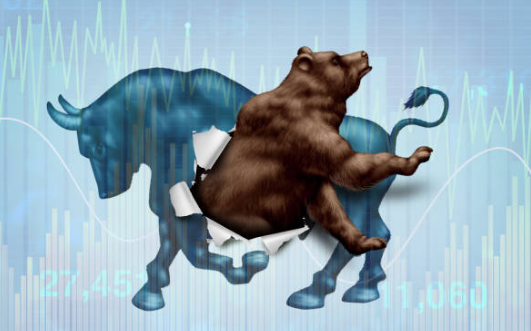Please use a PC Browser to access Register-Tadawul
Trading Wisdom | From $40,000 to $20 Million! The Complete Trading Principles of Trading Champion Martin Schwartz
PowerShares QQQ Trust,Series 1 QQQ | 531.65 | +1.03% |
Microsoft Corporation MSFT | 486.00 | +1.80% |
Martin Schwartz is a trading master who regards the trading floor as his stage. He has participated in 10 U.S. futures and stock investment competitions and won 9 championships, ranking second only once by a small margin. In the 9 championship competitions he won, his average investment return rate was as high as 210%, and he even achieved a record-breaking return rate of 781% in one of the competitions.

1
Schwartz, who originally worked as a securities analyst, followed the career path of most trading masters. He began his trading career with consecutive losses. He often found himself on the brink of bankruptcy due to trading losses. Fortunately, he gradually improved and perfected his trading strategy during his continuous losses, making himself a profitable trader.
Starting with $40,000, Schwartz's personal ability allowed him to reach $20 million, making him one of the world's most successful traders. If he hadn't announced his abrupt retirement at the peak of his life at the age of 48, this legend might have continued.

Surprisingly, Schwartz did not use the principle of "follow the trend" in his operations.
Schwartz does the same homework every day, even during interviews. Although he looks quite tired, he waits until the analysis is finished before taking a break. Schwartz has been doing this kind of work for 9 years with a fanatical spirit, never stopping.
Previously, Schwartz always thought that he could not make mistakes. After becoming a winner, he would tell himself, "If I am wrong, I must get out quickly." Because of this saying, he could leave with the green hills remaining, and there would be no worry about running out of firewood.

2
Schwartz's success came from two conditions:
(1) He found his own unique trading method. During the difficult years, Schwartz used fundamental analysis to determine his trades. When he switched to technical analysis, his career took off. It should be emphasized that this is not to say that technical analysis is better than fundamental analysis, but to find a trading method that is suitable for oneself.
(2) The second key point is Schwartz's attitude. According to Schwartz's analysis, when he put face issues behind his pursuit of results, his trading became invincible.

In addition, risk control is also one of the key factors of Schwartz's success. He has a principle when doing trading, which is to determine the risk he can bear in the trade before holding a position. After suffering significant losses, he reduced his trading volume. Moreover, in order to reduce the risk, he also adopted the strategy of reducing the trading volume after making a profit. Schwartz said that losses often follow successful trades, and most investors should have similar experiences because success brings complacency, which leads to carelessness.
In 1989, Schwartz formed an investment fund with a capital of $80 million, but after more than a year of operation, the results were not satisfactory. Schwartz found that large-scale capital was not suitable for his short-term trading style, so he decisively dissolved the fund and resumed trading with his own funds, making a considerable profit every year.

When asked about his most memorable and exciting trading experience, Schwartz believed that it was in November 1982 when he lost $600,000 in a day, exceeding his expected level. The stock market rose 43 points that day, one of the largest single-day gains at the time, but Schwartz continued to short it like a fool.
In fact, it is impossible to avoid making mistakes when trading, and Schwartz also made a serious mistake. At that time, he shorted the stock price index futures and bond futures, but the corporate bond price rose above its moving average price, causing Schwartz to become nervous. This was Schwartz's biggest mistake in his trading years, and he suffered a loss of six figures in a single day.

3
In Schwartz's trading, he has his own set of complete trading principles:
(1) Grasp the trend. Before holding a position, he always checks the moving average price to see if the current price is higher than the moving average price. Schwartz is unwilling to go against the trend shown by the moving average.
(2) The most important principle is money management. Before holding a position, he should decide how much loss he is willing to bear and set a stop loss point, which must be strictly followed. Schwartz felt that he had not done well enough in this area and was always looking for better ways to improve.
His trading philosophy is to require himself to make a profit every month, even every day. In Schwartz's trading career, 90% of the months were profitable, which is actually quite good. Most investors' reaction to losses is to exit as long as they don't lose money. Why wait until they don't lose before exiting? This is just a face issue.
The reason why Schwartz became a successful investor is because he finally put his face aside. Forget about his self-esteem and face issues. Making money is the most important thing.

(3) Start over every year. This is one of Schwartz's trading principles. Every January, Schwartz tells himself that he is a poor man, which makes him more focused on trading.
(4) Get used to working alone. Schwartz used to go to the office in the city to work because he had many friends there. However, as time passed, he had fewer and fewer friends, and he stopped going there. He talks to a dozen friends on the phone every day and tells them his trading methods and strategies, but they also have their own trading methods.
(5) After closing a profitable trade, take a day off as a reward. Schwartz found it difficult to maintain good trading results for two weeks in a row. When he experiences a period of continuous profits, he immediately reduces his trading volume. The reason for losses is often not stopping after taking profits.



